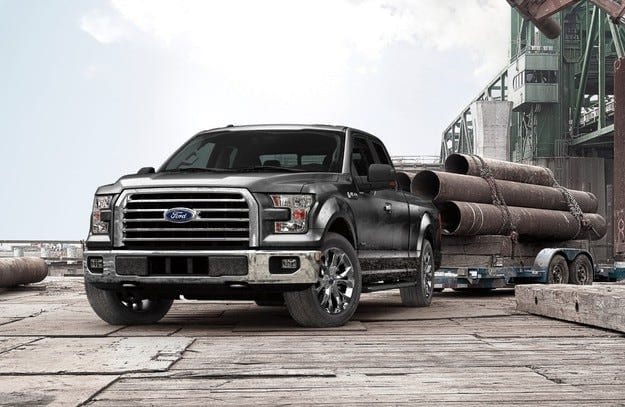
Test drive countdown: Ford EcoBoost engines

Introducing the 2,3 EcoBoost Ford Mustang and 1,0 EcoBoost engines
After the Ford Mustang became the best-selling sports car and the 1.0 EcoBoost small engine won the Engine of the Year award for the fifth time in its class, we decided to tell you more about the powertrain of the first and small three-cylinder masterpiece.
The Ford Mustang 2,3 EcoBoost four-cylinder engine is a high-tech unit that has no reason to worry about driving such an iconic car. But it achieves all this thanks to the already proven solutions of other EcoBoost machines, including the small masterpiece EcoBoost 1,0.
The fact that the introduction of a base four-cylinder engine into the new Mustang still looks odd means that we are indeed living in interesting times of rapid and radical change. However, they occur so quickly that they do not allow one to assimilate the irreversible course of accompanying events. However, it should not be forgotten that the 2,3-liter sports car engine does not come from anyone, but from Ford's already proven downsizing maestro. The facts are indisputable - recently the 1.0 EcoBoost received the title of "International Engine of the Year in the class up to 1,0 liter" for the fifth time in a row, and before that won the absolute award "International Engine of the Year" three times, which no one else knew thanks to his masterpieces. companies have failed. Probably Ford was hesitant to offer a new Mustang with an eight-cylinder V-2,7 engine, which, despite the modifications, is now an archaic machine that could easily be replaced by one of the EcoBoost six-cylinder units with two turbochargers (3,5 EcoBoost and 100, 5,0 EcoBoost ). It's true that even the largest of them can't deliver a distinctive octave sound, but it's also true that its most powerful version offers XNUMXNm, more than XNUMXNm of Ti-VCT.
Anyway, we can say for sure that in this form, the V-XNUMX sings its swan song, whether we like it or not.
In fact, exactly 30 years ago, Ford stunned the American auto industry by offering the fastest Mustang, the SVO version, not with the typical big eight but with a turbocharged 2,3-liter inline engine. Yes, that's right - the same volume and filling as the new 2,3 EcoBoost. And then time speaks for itself - US emissions regulations are getting tighter - and the engine is based on an existing naturally aspirated car from Ford's lineup. However, we must mention the interesting fact that the power of this machine - despite the loud meaning of the words behind the acronym SVO, or the unambiguous name Special Vehicle Operations - is only 175 hp, which seems ridiculous at almost twice the size. number in the new mustang.
As with the entire line of new downsized units, Ford uses the much more modest but, as it turns out, more influential phrase EcoBoost, and the 2,3-liter engine from the XNUMX-liter unit has been under intensive development for three years. ... The engine is designed to accommodate both front and rear transmission, so it should come as no surprise that it appeared simultaneously in front-wheel drive. Lincoln MKC and Mustang.
EcoBoost is running at full capacity.
When Ford engineers unveiled their 1,0 EcoBoost three-cylinder turbo engine to the tech community in 2012, it still seemed like a distant mirage to many. It then went on to win the International Engine of the Year award for three years in a row - something that has never happened in the entire 16-year history of the competition. Added to this is five years in a row (including 2016) during which he won the title in his class. Bob Fazetti, head of engine development at the blue oval company, says he never imagined the engine would be such an impressive success. When, at the beginning of the development phase of this car, the then head of the engine department, and now higher in the Ford hierarchy, Barb Samardzic, presented a new concept to the board of directors in Detroit, one of the skeptical bosses even asked, didn’t he? sound like a sewing machine. In fact, the decision to create it is not an easy one and quite a bold step forward, because the technologies of turbocharging and direct injection are not yet sufficiently developed, at least for Ford engineers. And integrating them into such a machine is a leap into the unknown. The first of a line of downsized engines, the 3.5 EcoBoost is not exactly a downsized engine, as it is a more powerful version of the naturally aspirated engine that existed at the time.
Now that Ford covers virtually the entire range of cars on offer with such units, there seem to be clear answers to the question of the future of naturally aspirated units. However, the company's engineers are leaving such opportunities, focusing mainly on cars for basic urban purposes, where it is not necessary to have such a large power. This, for example, is the naturally aspirated version of the three-cylinder engine. When it comes to more power and less fuel consumption, there is no alternative to this technology in gasoline engines. The next generation of EcoBoost engines, along with the previous EcoBoost 3,5, 1,0, 1,6 and 2,0 engines, includes the 1,5 and 2,3 four-cylinder and the 2,7 six-cylinder.
The first of these, unveiled at the Geneva Motor Show in 2014, is a development of a 1,6-litre engine whose smaller displacement is mainly due to the fact that engines with displacements below 1,5 liters enjoy significant tax incentives in China. . However, it is a more modern car than its 1,6-liter cousin, and at the same power levels of 150 and 180 hp. provides lower fuel consumption. This new generation (manufactured in Romania) borrows technology from its small 1,0 EcoBoost counterpart, such as a completely new head design with improved cooling and integrated exhaust pipes. The 1,6 EcoBoost itself replaced the two-litre naturally aspirated 2,0 Duratec a few years ago, and the larger 2.0 EcoBoost replaced the smaller V6 engines – mostly in US models and sporty versions of the Focus and Mondeo. The naturally aspirated 3,5-liter engine is used primarily for SUV, pickup and luxury limousine models and has 320 hp in various variants. (542 Nm) up to 380 hp (624 Nm).
1.0 EcoBoost
More liters of power than the Bugatti Veyron
Not only has it won the EcoBoost 1,0 International Engine of the Year award three times in a row, it has received numerous other awards in this ranking. Meanwhile, this car has got an even more powerful version for the Fiesta Zetec S Red and Black models. In them it has no more and no less than 140 hp. This means a liter more power than the Bugatti Veyron. With this engine, the Fiesta accelerates from 100 to 9 km / h in 4,49 seconds with a standard cycle consumption of 100 l / XNUMX km. To achieve this power, this little engineering marvel has undergone new boost training, including new tuning for Continental turbocharger control and valve opening; intercooler and throttle valve changed.
The turbocharger's RPM reaches 248, twice that of a Formula 000 car engine. However, this ingenious machine maintains a high level of efficiency, delivering not only fast response, but also a maximum pressure of 1 bar. The maximum pressure in the cylinders of a one-liter engine is 1,6 bar. For track racing, even versions with 124 and 180 hp are used, and in the new generation of the car, one of the cylinders is disabled in partial load mode. It is indeed a great achievement to have a three-cylinder engine running on two cylinders without compromising its balance.
2.3 EcoBoost
Fantastic Four
Theoretically, this could be the base drive, but of course this engine does not suffer from a lack of power - with its 314 hp. and 434 Nm of torque, this is the most powerful four-cylinder engine ever built by Ford. Perhaps the nature of the engine is the decision to build it in Europe (at the plant in Valencia, Spain), but Ford's plant in Cleveland, Ohio will help with the increase in sales.
The goal of the team of Scott Makovsky, head of global four-cylinder division, is to reintegrate one of them into the Mustang, but the car does not lose power. The assignment required horsepower to start at 3, and the team spent 20 percent more than standard time on computer analysis before the first part was done. Particular attention is paid to the air flow to the cylinders and the combustion process, since the compression ratio is high (9,5: 1), the piston stroke is large (94 mm), and the cylinder diameter is small (87,55 mm). ). This specific architecture leads to the need for airflow analysis, and the danger of fuel flooding the cylinder walls requires the creation of injectors with six orifices and a different nozzle shape.
Like all other members of the EcoBoost family, the 2,3-liter engine has variable valve timing, 163 bar direct injection and 1,7 bar forced filling, which is also quite a lot for this type of engine. The fuel pump and injectors are supplied by Bosch and perform two injection cycles in cold start and low speed modes for better air-fuel mixing. The aluminum block is die-cast and has implanted steel cylinder liners and several external ribs to strengthen the structure.
Instead of separate heels, the main bearings use a common support frame, the crankshaft is made of steel, the connecting rods are made of forged steel, and the forged aluminum pistons have a steel steel insert that serves as the base for the upper piston sealing ring. Valve recesses are formed on the front of the piston itself, and inside each piston has a separate cooling nozzle. The cylinder head itself, like its small three-cylinder counterpart, has integrated exhaust manifolds in the head, reducing turbo heat stress and gas flow losses, to which sodium-filled valves and reinforced beds are added.
Of particular importance to the design of the engine was the installation of a new Honeywell dual-mode turbocharger. The double helix architecture retains the high energy of the pulsations literally hitting the turbine blades. This also allows for wider valve opening phases, since direct injection allows clean air to be flushed through the cylinders better, which also provides greater phase overlap. Their control is carried out using dephasing oil devices under pressure and is in the range of 50 degrees. For such a large four-cylinder engine, a balancing shaft is indispensable, which, however, in this case is made of aluminum and saves 5 kg of weight.
In short
Ford 2.3 EcoBoost
Engine / Displacement: 2,300-cylinder, 3cc
Horse powers 314 hp at 5500 rpm
Timing belt: DOHC, four valves per cylinder, variable oil inlet and outlet phases, oil pressure valves
Compression ratio: 9,5: 1
Bore x Stroke: 87,55 x 94mm
Turbocharger: Honeywell Garret dual jet
Fuel injection system: Bosch
Construction: aluminum block and head with integrated exhaust pipes.

